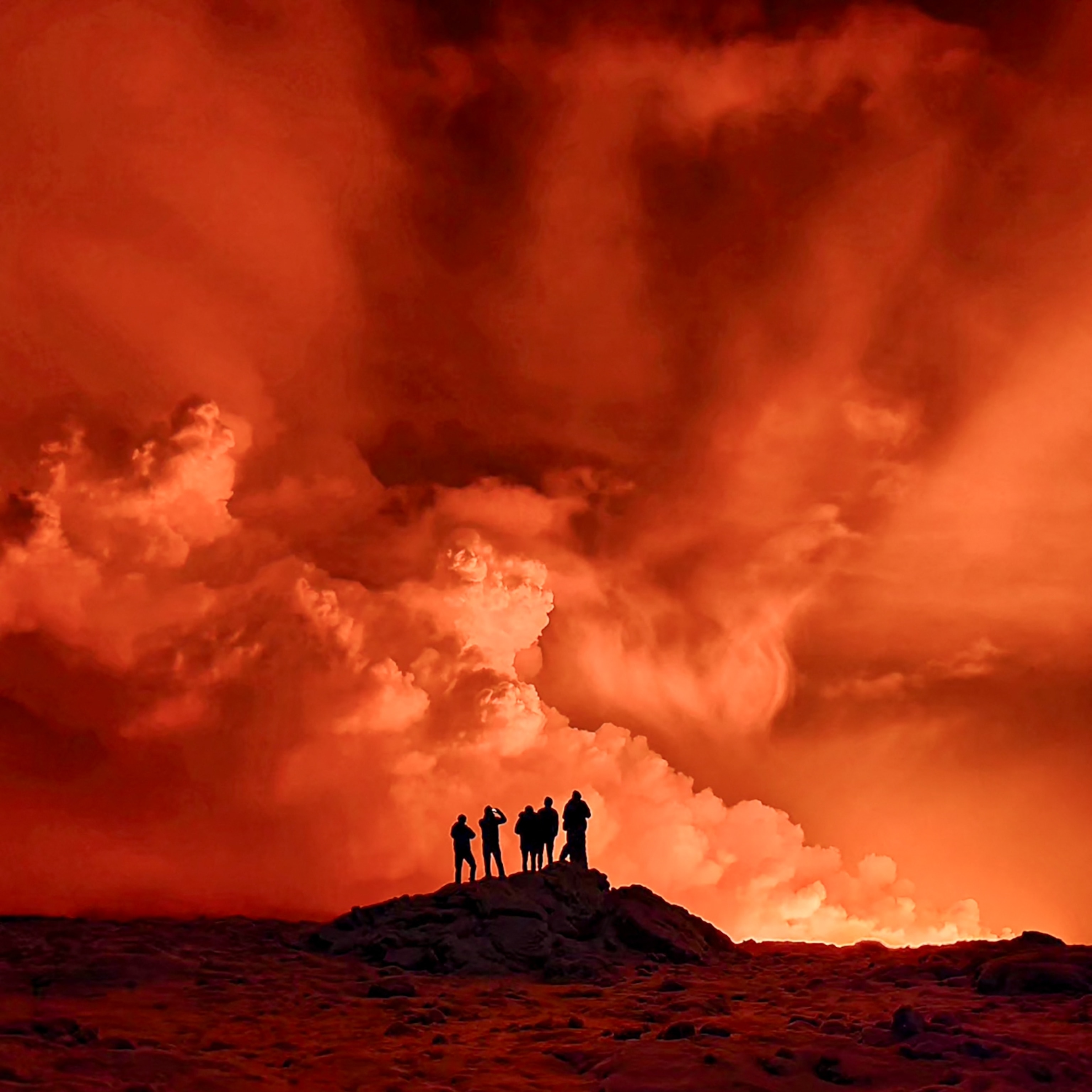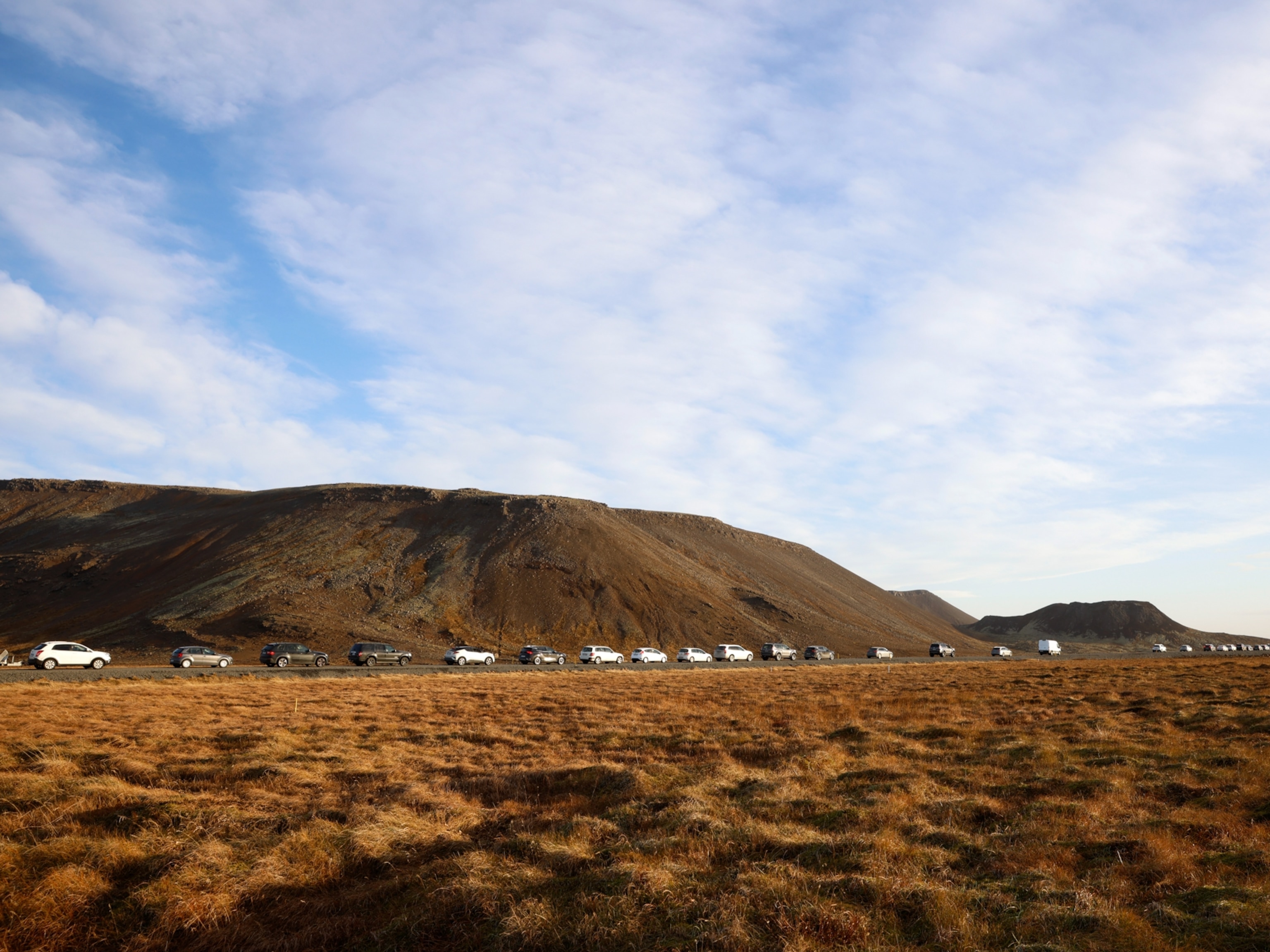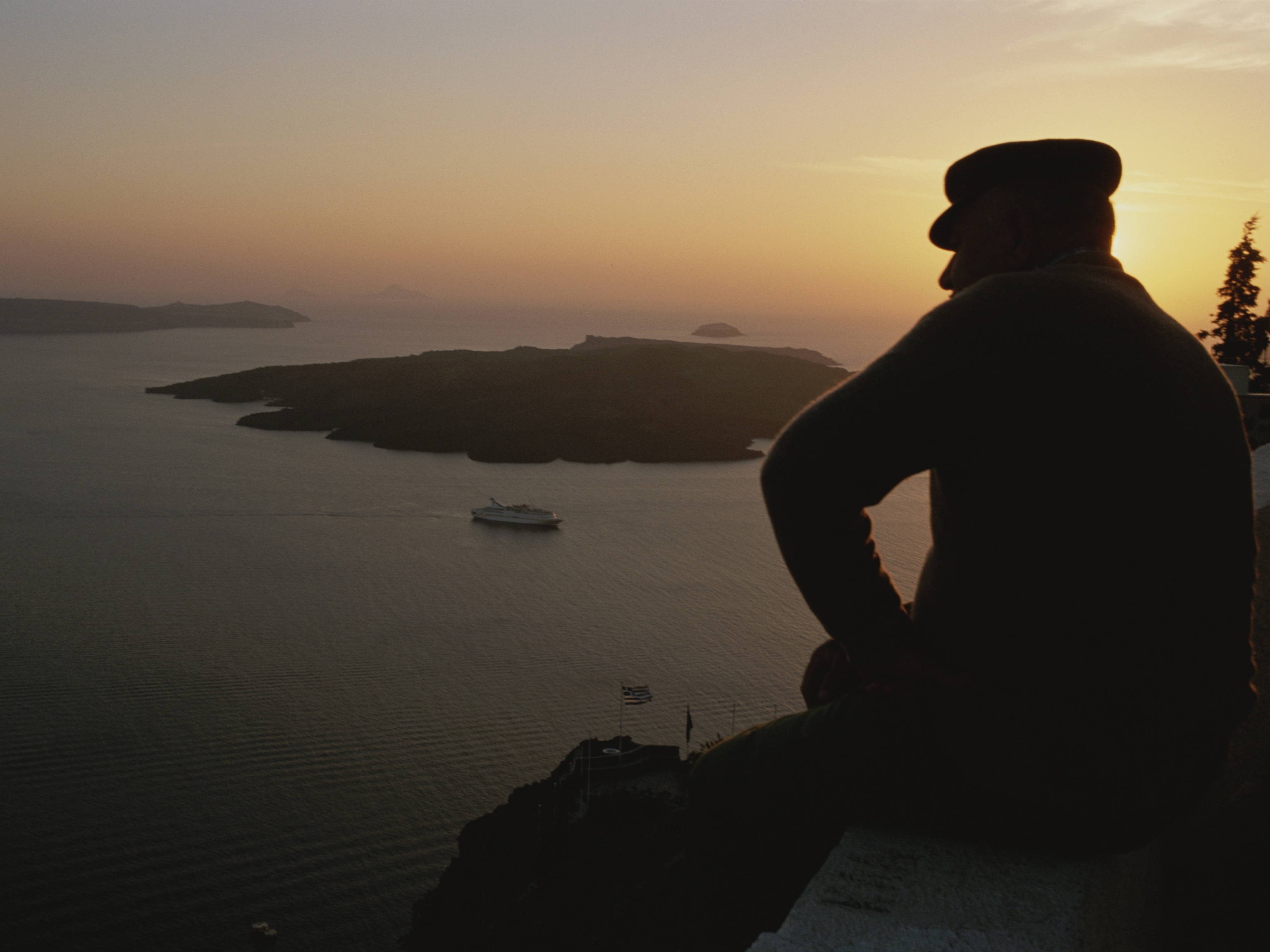Tourists Brave Iceland's Dangerous Volcano to See Eruption Firsthand
The Bárðarbunga volcano puts on a dramatic lava show for intrepid visitors.
Iceland's Bárðarbunga volcano continues to erupt in dramatic fashion, with lava spewing from its Holuhraun fissure since late summer. National Geographic was recently on the scene in central Iceland, documenting ongoing scientific investigations into the eruption as well as a burgeoning tourism industry around the natural show.
The eruption of Iceland's second tallest volcano is larger than any seen for two centuries on the volcanically active island (see a live webcam). On average, the volcano has spewed out enough molten rock to bury an area the size of an NFL football field every 5.5 minutes.
Despite the dangers, the eruption is drawing some people into the area. More than a hundred scientists are studying Bárðarbunga as part of the European Commission-funded FUTUREVOLC project, and an increasing number of tourists are also visiting the area to witness an eruption firsthand.
The logistics of viewing an active volcano are tricky, and visitors are often barred from the area or moved far away, thanks to pockets of activity or releases of poisonous gases. (Go behind the scenes with videographers filming the volcano in "The Logistical Nightmare of Visiting a Volcano.")
In August, National Geographic spoke with science writer Alexandra Witze, co-author of Island on Fire: The Extraordinary Story of Laki, the Volcano That Turned 18th-Century Europe Dark, about Iceland's volcanoes and what makes them so dangerous:
What have been some of the biggest volcanic eruptions in Iceland?
Some of the most famous ones in the past couple of decades have been Surtsey, a brand-new island that rose from the waves off the southern coast in 1963, and Heimaey, another island where in 1973 an eruption began in the middle of the night, in the middle of a town.
But if you go further back in time, you can find much more devastating examples. In the year 1104, the volcano Hekla covered more than half the island with pumice. And in 1783, Laki erupted for eight months, pouring out the biggest lava flow in recorded history. Laki also emitted more than a hundred million tons of sulfur dioxide, which drifted over Europe to form a choking fog that damaged crops and changed the climate for years.
Is Bárđarbunga particularly active or dangerous?
About 8,000 years ago it generated the largest eruption anywhere in the world for the past 10,000 years. Bárđarbunga, or a fissure very near it, last erupted in 1910. On average, this volcano has erupted [more frequently,] about five times each century for the past 7,600 years.
Why does Iceland have so many volcanoes?
Iceland has around 30 volcanoes, depending how you count the active mountains and fissures. There are two main reasons why there are so many. For one thing, Iceland sits on the boundary between two tectonic plates that are spreading apart, with the North American plate moving westward and the Eurasian plate moving eastward. Molten material rises to Earth's surface all along this Mid-Atlantic Ridge.
Second, Iceland sits atop a plume of hot material welling up through the mantle, which boosts the flow of molten material beneath the island even more than elsewhere along the Mid-Atlantic Ridge. All this fresh magma means that all of Iceland was formed in the past 25 million years.
Why are eruptions in Iceland of such concern?
Iceland is right in the middle of a lot of aviation routes that cross the North Atlantic. And it's not too far from mainland Europe, so if the wind patterns are just right its ash can be carried across Scandinavia, Great Britain, and farther into Europe. Volcanic ash can shut down jet engines if it gets sucked into the engine intake.
And of course a lot of Iceland's volcanoes are covered by ice, which makes them particularly unpredictable.
What happens when a volcano erupts under ice?
Eruptions that happen under ice are often more explosive than those that happen on dry land. The meltwater and the magma interact to form small particles of ash that can be blown high into the air.
This happened in Eyjafjallajökull in 2010; for a couple of weeks the magma erupted quietly out of a bare ridge on the mountain, but as soon as the eruption changed and the magma started coming out beneath a glacier, you got this very high plume of ash that started blowing south and east, toward continental Europe.
How thick is the ice over the Bárđarbunga volcano, and does that make it more or less dangerous?
The ice over Bárđarbunga is at least several hundred meters thick. To some extent the weight of overlying ice actually suppresses how explosive eruptions can get. Scientists are studying how climate change might affect volcanoes, on the theory that the less ice there is on top, the more they might erupt in the future. But the interaction between volcanoes and ice is very complicated, and it can be really hard to predict what will happen in a given situation. (Related: "Scientist Models Deadly Volcano Eruptions With Harmless Baby Powder.")
Should people be worried about air travel now or when passing by Iceland in the future?
Don't cancel your plane tickets just yet. If molten material actually makes it through the ice to the open air, there could be an ash plume, but it may not affect air travel as significantly as previous eruptions. Since the air-traffic-stopping eruptions of 2010 and 2011, scientists have gotten a lot better at forecasting how volcanic ash spreads through the atmosphere, and airlines have adopted new rules about what levels of volcanic ash are safe to fly through.








